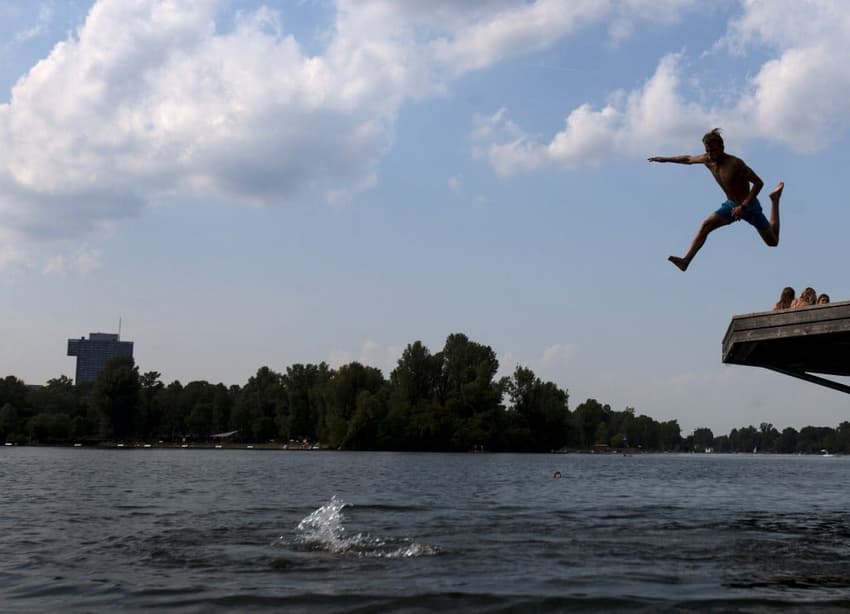Pfingstmontag: Why is Pentecost a holiday in Austria?

Austria has many national holidays, and on this Monday, May 29th, shops, banks and supermarkets will also be closed. Why and how do people celebrate it?
Austria is one of the EU countries with the highest number of official holidays - 13 national ones in total - and most of them are related to Christian celebrations in this deeply Catholic central European country.
This year, Monday, the 29th of May, is another holiday - to the joy of workers eager to enjoy a long weekend as Austria finally gets summery weather. So, what is this holiday, how do Austrians celebrate it, and what should you know about it?
What is Whit Monday?
Whit Monday, also known as Pentecost Monday, falls on the day after Pentecost Sunday, marking the seventh Sunday after Easter. It is a time when Christians commemorate the descent of the Holy Spirit upon the disciples of Jesus, an event described in the Bible.
The origins of Whit Monday as a holiday in Austria trace back to centuries-old customs and religious practices. It serves as a day of reflection, spiritual renewal, and community gathering.
READ ALSO: When are Austria’s school summer holidays in 2023?
The holiday's historical significance can be attributed to the influence of the Roman Catholic Church, which has played a vital role in Austria's religious and cultural landscape. Currently, just over 55 percent of the Austrian population identifies as Roman Catholic. This number was near 90 percent in the 1950s.
Whit Monday became a significant part of the liturgical calendar, symbolising the Holy Spirit's arrival and its transformative power.
How is it celebrated?
Austrians may celebrate the date with colourful processions, festivals and by gathering family members. However, adhering to the holiday's religious significance is becoming rarer.
Nowadays, and especially in bigger cities, people in Austria tend to enjoy the holiday as a day off. However, with this particular one always falling on a Monday, travelling is also very common - and roads tend to become very busy with loads of traffic.
READ ALSO: Why everything in Austria is closed on Sundays – and what to do instead
As it is with every holiday, on Whit Monday, most stores and supermarkets will be closed (so plan your shopping accordingly, as those are also closed on Sundays). However, restaurants, bars and ice cream parlous are usually quite packed but open. So are most tourist attractions.
Comments
See Also
Austria is one of the EU countries with the highest number of official holidays - 13 national ones in total - and most of them are related to Christian celebrations in this deeply Catholic central European country.
This year, Monday, the 29th of May, is another holiday - to the joy of workers eager to enjoy a long weekend as Austria finally gets summery weather. So, what is this holiday, how do Austrians celebrate it, and what should you know about it?
What is Whit Monday?
Whit Monday, also known as Pentecost Monday, falls on the day after Pentecost Sunday, marking the seventh Sunday after Easter. It is a time when Christians commemorate the descent of the Holy Spirit upon the disciples of Jesus, an event described in the Bible.
The origins of Whit Monday as a holiday in Austria trace back to centuries-old customs and religious practices. It serves as a day of reflection, spiritual renewal, and community gathering.
READ ALSO: When are Austria’s school summer holidays in 2023?
The holiday's historical significance can be attributed to the influence of the Roman Catholic Church, which has played a vital role in Austria's religious and cultural landscape. Currently, just over 55 percent of the Austrian population identifies as Roman Catholic. This number was near 90 percent in the 1950s.
Whit Monday became a significant part of the liturgical calendar, symbolising the Holy Spirit's arrival and its transformative power.
How is it celebrated?
Austrians may celebrate the date with colourful processions, festivals and by gathering family members. However, adhering to the holiday's religious significance is becoming rarer.
Nowadays, and especially in bigger cities, people in Austria tend to enjoy the holiday as a day off. However, with this particular one always falling on a Monday, travelling is also very common - and roads tend to become very busy with loads of traffic.
READ ALSO: Why everything in Austria is closed on Sundays – and what to do instead
As it is with every holiday, on Whit Monday, most stores and supermarkets will be closed (so plan your shopping accordingly, as those are also closed on Sundays). However, restaurants, bars and ice cream parlous are usually quite packed but open. So are most tourist attractions.
Join the conversation in our comments section below. Share your own views and experience and if you have a question or suggestion for our journalists then email us at [email protected].
Please keep comments civil, constructive and on topic – and make sure to read our terms of use before getting involved.
Please log in here to leave a comment.